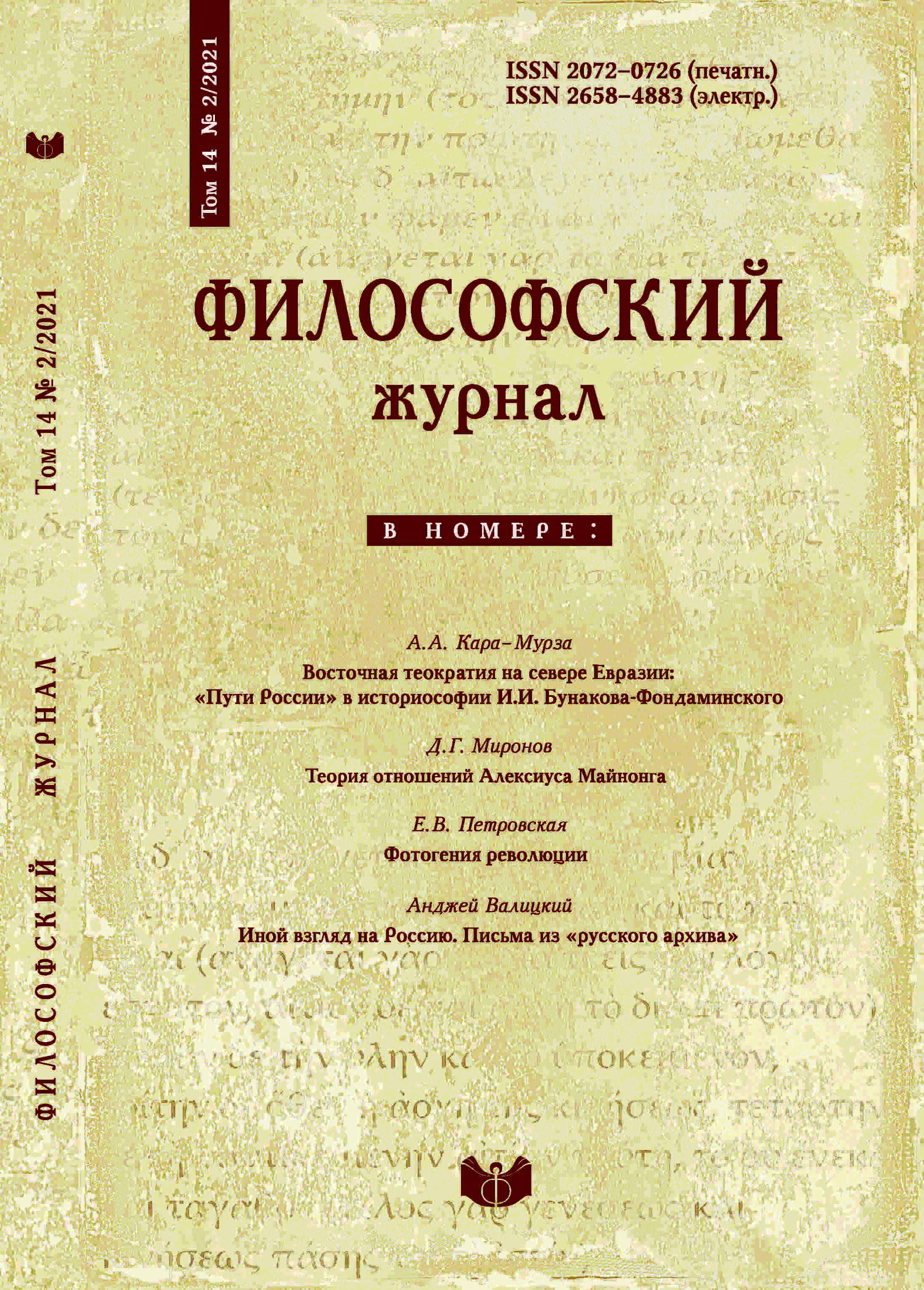The problem of intentionality in the school of Brentano
DOI:
https://doi.org/10.21146/2072-0726-2021-14-2-82-94Keywords:
intentionality, intentional object, immanent object, content of presentation, Brentano, Twardowski, MeinongAbstract
From the moment Franz Brentano formulated his definition of intentionality, it immediately began to undergo modifications in the works of his students. Brentano’s original definition included reference to the scholastic tradition, but it differs from the one that was formulated by the scholastics. In his work “Psychology from an Empirical Point of View”, Brentano defines intentionality both as an orientation towards an object and as a relation to some content, but at no later time, neither in this work, nor in other published works, does he clarify the meaning of the concept of «content». In this regard, the students and interpreters of Brentano’s works had a question: does the scheme of intentionality consist exclusively of an intentional act and an object, or does it also include the content of a representation? Brentano’s disciples did not view this definition as clear and unambiguous. In order to clarify this concept, they often studied other similar philosophical conceptions in search of a more precise definition. In particular, they looked for a similar concept in the theory of Bernard Bolzano. The first version of the schema of intentionality, including the content of representation, appeared in the works of Hoeffler and Twardowski. For this reason, for a long time they were considered by historians to be the discoverers of the distinction between object and content. However, after the notes of Brentano’s lectures, which he also read to his students, were recovered, it became clear that Brentano himself made this distinction. In this regard, it seems extremely important to interpret the history of the relationships in the Brentano school through the prism of the discussions devoted to the definition of intentionality and the structure of an intentional act, as well as to understand the origins of each individual interpretation of this concept proposed by Brentano’s students






